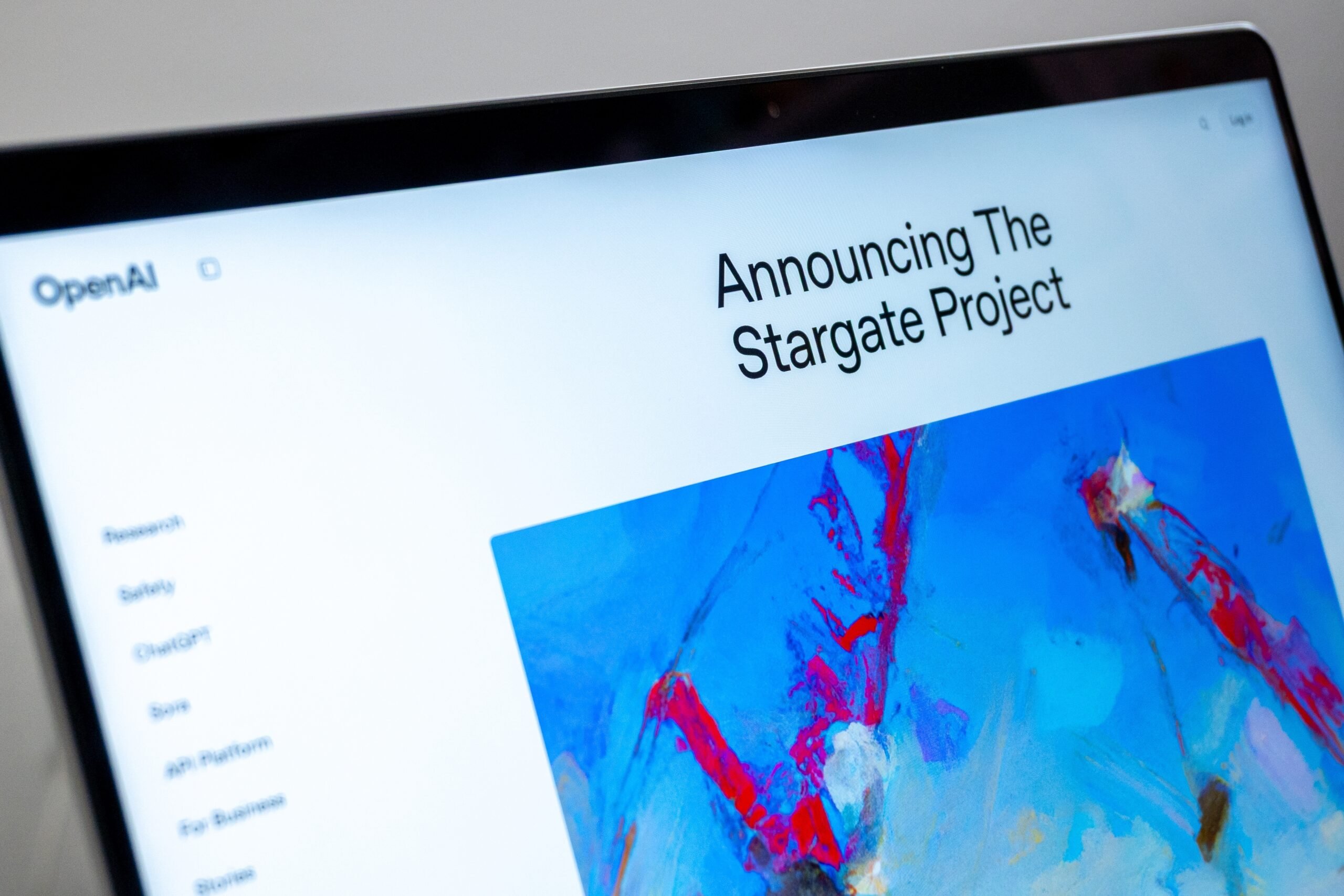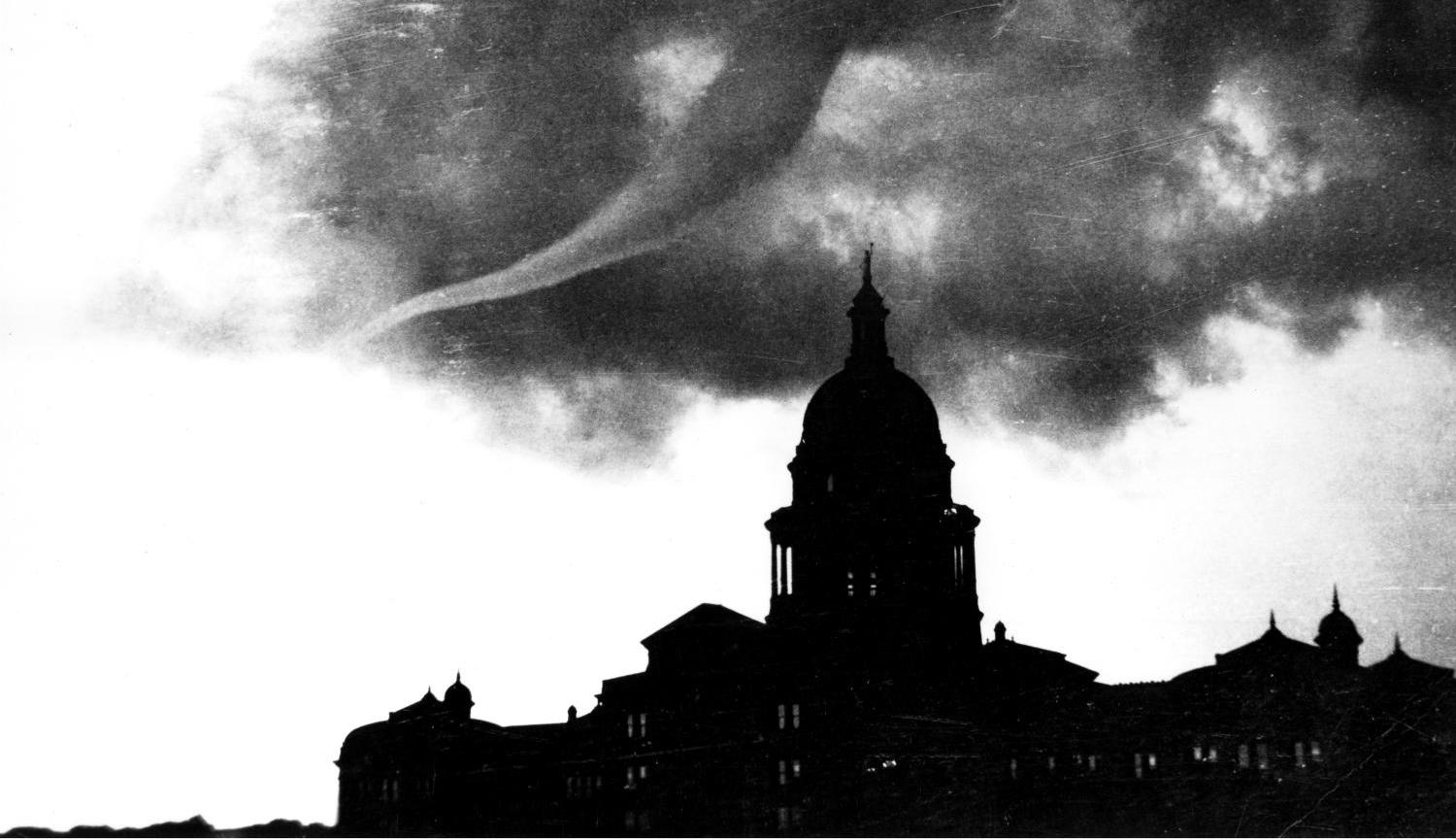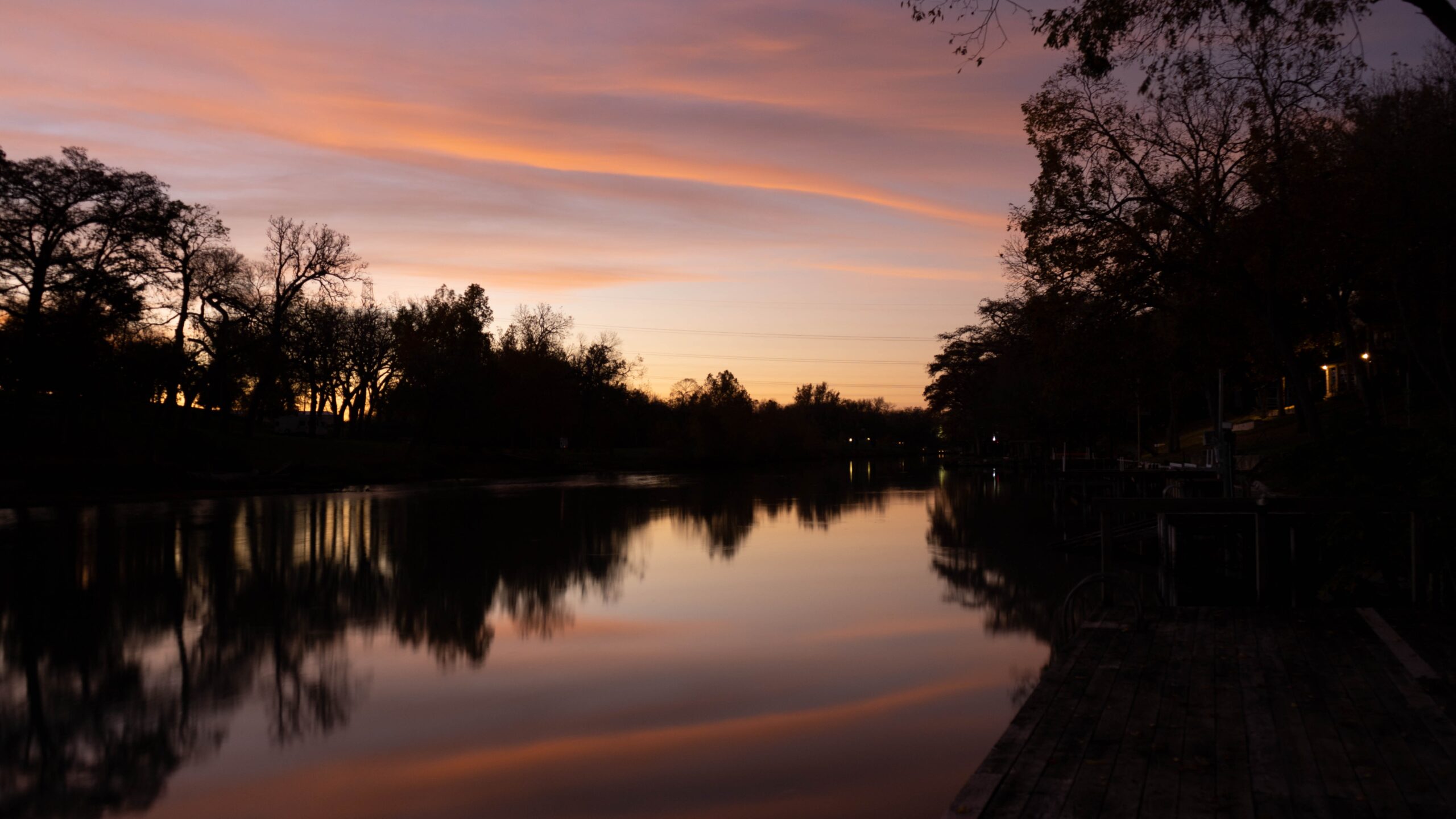If We Build It, Will They Come?
West Texas residents fight to halt the proposed La Entrada al Pacifico
The talk in West Texas this summer is La Entrada al PacÃfico, and it’s either a great opportunity to develop an international trade route, or it’s a wretched plan that would ruin the pristine and unique qualities of the Big Bend. There’s not much sentiment in between.
Both sides hope a study by the Texas Department of Transportation will clarify La Entrada’s short- and long-term impacts. At the crux of the issue are three questions: Are the trucks coming, and if they are, how many, and when?
La Entrada’s pitch goes like this. Cargo ships from Asia and overflow ship traffic from Los Angeles, Long Beach, and Seattle will put in at a deepwater port in Topolobampo, Sinaloa, on Mexico’s Sea of Cortez. From there, merchandise will be loaded onto trucks and railcars and transported across the vertiginous Sierra Nevada and Copper Canyon, through Chihuahua City eastward until it crosses into the U.S. at Presidio. Then the trucks will rumble up U.S. Highway 67, through Shafter ghost town and by Chinati Peak. Past Donald Judd’s concrete boxes outside Marfa, the trucks will hang a right at the town’s single, blinking red light and head for Alpine, where they’ll duck under a low train overpass and chug straight through downtown. A few miles out of town, it’s a left turn to Fort Stockton, then on to McCamey before turning onto U.S. 385 to Midland and Odessa.
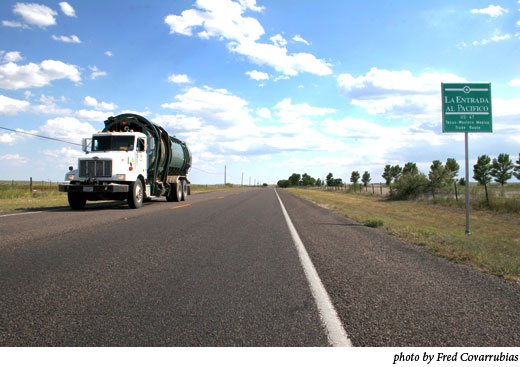
The Midland-Odessa area is known for oil rather than commercial shipping or distribution. La Entrada promoters have set out to change that. The notion of the Entrada corridor was born in the mid-1990s, when the price of crude was generally less than $20 a barrel and the Permian Basin’s oil-driven economy wasn’t as bullish as today. Launched by a group called the Midland-Odessa Transportation Alliance, or MOTRAN, and members of Chihuahua state’s economic development department, La Entrada promised to lift northern Mexico and the Permian Basin out of economic doldrums, and diversify business and job opportunities.
Midland-Odessa may be 800 miles from the Pacific Ocean, but folks from the Permian Basin dream big. “We originally started looking at an extension of I-27 from Lubbock to Midland-Odessa,” says Charles Perry, MOTRAN’s founder and a current director. “It helped to anchor it with a route on into Mexico, because at that time, NAFTA had just passed, and there was a push for better connections to Mexico. The more we looked at it, the more it really made good sense.”
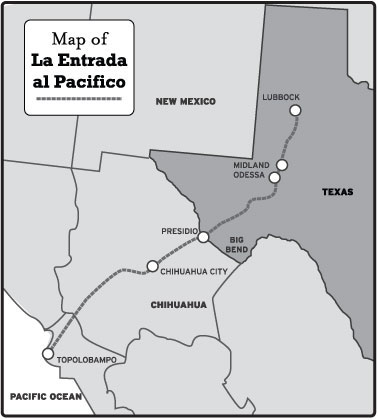
Over the years, MOTRAN has successfully lobbied for state and federal funding to improve highway infrastructure around the basin; some of the roads are linked to Entrada’s route for commercial traffic. And they’re proud of the support they’ve had at home: MOTRAN’s website prominently features a photo of then-governor George W. Bush, a Midlander, signing legislation naming La Entrada an official state corridor back in 1997. Bush was in office-this time in the White House-when La Entrada won its 2005 federal designation as a “high priority corridor” on the national highway system. The group helped push for federal designation of the route. Little green signs that read “La Entrada al PacÃfico” dot sections of the highway.
Big Bend residents have kept a collective eye on La Entrada for years, especially because of Mexico’s progress with its road upgrades. Mexico, it seemed, was eager to advance. A new bypass was engineered and built around the steep, winding Peguis mountain range between Chihuahua City and the border town of Ojinaga. Economic development and transportation officials from Sinaloa and Chihuahua told Texas transportation officials about specific plans for the Entrada route through their states. Many of those improvements still have a long, long way to go before they’re completed, but dire predictions started appearing in West Texas about the anticipated increase in truck traffic on La Entrada. Freight traffic at the Presidio port of entry has risen in the last decade from 2,897 crossings in 1996 to 6,616 last year. Those numbers don’t offer an accurate window into how future traffic may evolve. Traffic projections for Entrada so far are wildly variable.
“There have been published figures that go from 25 trucks a day both ways to 4,000 a day,” says Don Dowdey, president of the very active Big Bend chapter of the Sierra Club. “People tell me they’ve seen 5,000 a day published.”
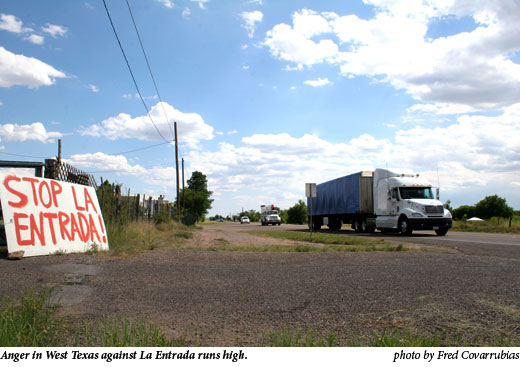
A 2006 report by Texas Transportation Institute researcher William Frawley strikes Dowdey as more accurate than others he’s seen. Frawley calculates that 35 to 292 trucks going both ways per day would be diverted to the Presidio port within about five years.
“He went to Chihuahua and talked to shippers there about what they’d be shipping,” Dowdey says. “It’s the only study I’ve seen based on real data. And that’s still a very large gap.”
The route’s multiple logistical problems make it hard to answer the “if, how many, and when” questions. The port at Topolobampo needs significant improvement-maybe two years of work that hasn’t yet begun, says a Chihuahua official. It must be deepened to handle really large commercial ships, and no port management firm has signed on to oversee the facility. There’s no highway built yet that could sustain semitrucks carrying goods across the Sierra Nevada. The tunnels for rail traffic through Copper Canyon are too low to double-stack container cars, and the grade is too steep in places for long trains. Commercial traffic is processed by customs and border-protection personnel from 10 a.m. to 6 p.m., weekdays only, at Presidio’s international bridge. A plan to allow Mexican trucks and drivers into the U.S.-and U.S. drivers into Mexico-is still pending. La Entrada’s original proposal calls for a four-lane highway through communities now served only by two lanes. Those little towns, like Marfa and Alpine, are ill-equipped for a tremendous increase in traffic volume, and construction of more lanes or bypasses would be years away.
That’s what makes the current TxDOT study, the first comprehensive look at the route, so important. MOTRAN lobbied for the $1 million in federal funds that were eventually set aside for the study; the state kicked in another $600,000.
“What we’re looking at is determining the feasibility of a four-lane, divided highway between Midland-Odessa and Presidio,” says Peggy Thurin, statewide planning coordinator for TxDOT. “We’ll be looking at the nationally designated La Entrada route and also other potential routes that the public has identified and our data have identified.”
Then there’s the awfulness factor. The Big Bend is wide and empty and isolated and severe, and that’s why people like it. The city of Presidio could use the economic boost additional truck trade could bring, but locals in the rest of the area worry that traffic from a four-lane highway would spoil the country, blacken the air, and thwart tourists who come by the thousands. There’s more state parkland in Brewster and Presidio counties than in all the rest of the state, say conservationists. Big Bend National Park alone is 801,000 acres.
“We’re a place you can come to and get away,” says Fran Sage, a Sierra Club member from Brewster County. “For us, La Entrada would be the destruction of one of the last places you can go to live or visit and have a satisfying experience with other people and the land. Once you run trucks through this area, it will never be the same again. Once it’s gone, it’s gone.”
Dowdey adds: “To say this is a special area and needs saving is not a radical idea at all.”
The TxDOT study began last fall, and by this spring, it was time to hold public meetings. The audience at Alpine’s meeting on March 13 was 400-strong. The school auditorium was too small to hold everyone, and the crowd spilled onto the sidewalk. Asked for a show of those in favor of La Entrada, one soul, a trucking operator from Presidio, raised his hand. There were passionate speeches and strong feelings. About 40 people spoke, bringing up concerns that ranged from health issues to the safety of Mexican trucks to the desire for peace and quiet. Some thought the route benefited Midland-Odessa at the expense of the Big Bend.
“It grieves me that our state leaders would sacrifice this region for a few people in Midland,” says Bill Addington, an activist and Sierra Blanca resident.
Many at the Alpine meeting also attended similar gatherings in Fort Stockton and Midland.
“I was a little surprised at the number of people who were at the Alpine meeting,” Thurin says. “I think it’s great. What the whole process is about is to talk to folks-and they were willing to talk.”
To tackle issues involved in the trade route, the consulting firm working on the study with TxDOT is meeting this summer with small groups of stakeholders to focus on La Entrada. A second round of public meetings will be held in late August or early September. A third round occurs around the first of next year. The research involves traffic models, current traffic, and a forecast of traffic in 20 to 30 years, information gleaned in part from discussions with the Mexican side of the Entrada equation. The study will be complete in spring 2008.
“Generally, at the end of the feasibility study, the results are turned over to district engineers,” Thurin says. “If we find a four-lane, divided highway isn’t feasible, but that we may see quite a bit of traffic, say around Marfa, one of our recommendations may be to look at a relief route. From that point, the districts would still need route-location studies to pinpoint exactly where the route would go and find funding. It’s not like at the end of the study we’d be throwing down pavement immediately.”
She assured the Alpine crowd this spring that the study would have no foregone conclusions.
“This is not a done deal,” she says. “A lot of people assume that because there’s a designated corridor, that we’re going through the motions. That’s not what we’re doing, I promise. We’re giving a good, unbiased eye to the corridor and seeing what we find.”
Thurin had never visited the Big Bend before the Entrada study. “It’s beautiful out there,” she says. “I can appreciate people wanting to protect it. But if you have a lot of trucks that are really coming, it’s better to prepare to address those should that be the case.”
But are they coming? Big Bend residents aren’t waiting for solid numbers and traffic forecasts to tell TxDOT what they think of the Entrada corridor. They’ve responded to the study and its call for public comment with zeal. A blog called Stopthetrucks.org is now online. The group Stewards of the Big Bend has organized. Letter-writing campaigns have been carried out. Café workers wear “Stop La Entrada” shirts. Petitions about La Entrada circulate at Marfa’s weekly farmer’s market. Homemade “Stop La Entrada” signs have popped up.
Despite the percolating anti-Entrada vibe in the Big Bend, Perry remains a staunch booster. Commercial traffic, he says, is like water-it will seek the path of least resistance. He believes truckers will look to Presidio to escape the snarled port at El Paso.
“Some locals don’t want it,” he says. “I try to tell them, whether this traffic comes is not my decision. Realistically, this route is easier than going through El Paso. We should get ready for what we think is coming in the future and not wait until someone is strangling with traffic. Let’s get the bypasses built first so we don’t disrupt the local communities. A truck is not going to be diverted by a T-shirt or a sign in the yard.”
Alternate routes have been floated at area commissioners’ court meetings, though some don’t seem too viable. One follows the Rio Grande through Candelaria and then up to Van Horn. Parts of it are difficult without a high-clearance vehicle, but the trucks would skip Marfa and Alpine entirely that way. Another would send trucks west from Marfa to Jeff Davis County, where they’d be shunted toward Interstate 10 at Kent on a section of a lovely, winding road known as the “Scenic Loop.” The absolute shortest route from Presidio to I-10 goes through downtown Marfa and Fort Davis. It doesn’t seem like there’s a good alternative out there.
Unless you start thinking rail. It’s possible that hundreds of trucks could be taken off the roads if their cargo containers were put on rail at Presidio. TxDOT owns the South Orient rail line from Presidio to San Angelo, and it’s leased to a Mexican company called Texas-PacÃfico. Here, too, are multiple problems: The track is decrepit in many places, and the speed on much of the line tops out at 10 mph. It would take many millions to get rail running, but according to one Chihuahua state official, rail is how the cargo will come-if it comes.
“The road is not complete; there’s still 250 kilometers to do on the road,” says Armando Correa, an engineer for the Chihuahua state office of industrial development. “The highway at this moment is not possible because the Mexican government has no money to finance it. It’s all mountain, it’s too expensive, and we need the money for more uses than that road. The plan is to do it by rail. The railroad can only pull 20 cars; the most it can run is two runs per day, 40 cars. And we still have problems because the port has to be redone. We have a long way to go.”
Correa points out that for Chihuahua, the goal of the Entrada corridor isn’t simply to funnel goods to the U.S. “That’s not the purpose of the corridor,” he says. “If that were to be the case, there’d be no gain; we’d only see a train go by, and that would not give us any work. The purpose is to improve the conditions of the mountain region, which is very poor.”
Once the shipping trade from Topolobampo gets going, he says, much of the merchandise would stay with Chihuahuan maquiladoras or be carried on to Juarez.
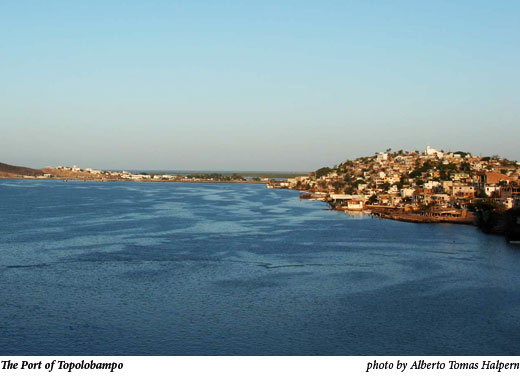
“Later on, maybe three, four, or five years, then some of the merchandise will go to Dallas,” Correa adds.
While the Entrada corridor is being parsed here, some lively port planning is going on elsewhere. Government officials in Baja, California, this summer announced plans to open bids later this year for construction and development of a $9 billion “megaport” at Punta Colonet, south of Ensenada. The 6,200-acre megaport, which includes a rail component, will be adjacent to Baja’s modern, transpeninsular highway that zips straight to San Diego two hours to the north. Promoters say it will be larger than the Los Angeles and Long Beach ports combined, handling 6 million to 8 million container units annually. Other Pacific port developments are ongoing at Lázaro Cárdenas and Manzanillo.
Perry is undaunted by the specter of competition. He maintains there’s room for everyone.
“Topolobampo is a long-term deal,” he says. “The ports at Long Beach and L.A. are going to continue to handle the traffic they can. With Topolobampo, we’re talking years in the future, when they can no longer handle the traffic.”
Still, the improvements needed at Topolobampo, the other ports in development, building the transmountain highway, constructing extra lanes or bypasses around Marfa and Alpine, pouring money into rail upgrades to the South Orient-taken piece by piece, the logistics and cost of La Entrada seem nearly insurmountable, like maybe it won’t happen.
“It will,” Perry says. “When we started this, I said it would not happen in my lifetime. I’m 77, and it’s not going to happen in my lifetime. We felt like this is a 40-year project, and it probably is. Over the next several years, we’ll see steadily increasing traffic counts. As the congestion increases in the major areas like El Paso, then everybody is going to look for alt
rnate routes to avoid that congestion. How do you stop it?”
Ster
y Butcher is a journalist with the Big Bend Sentinel in Marfa.
